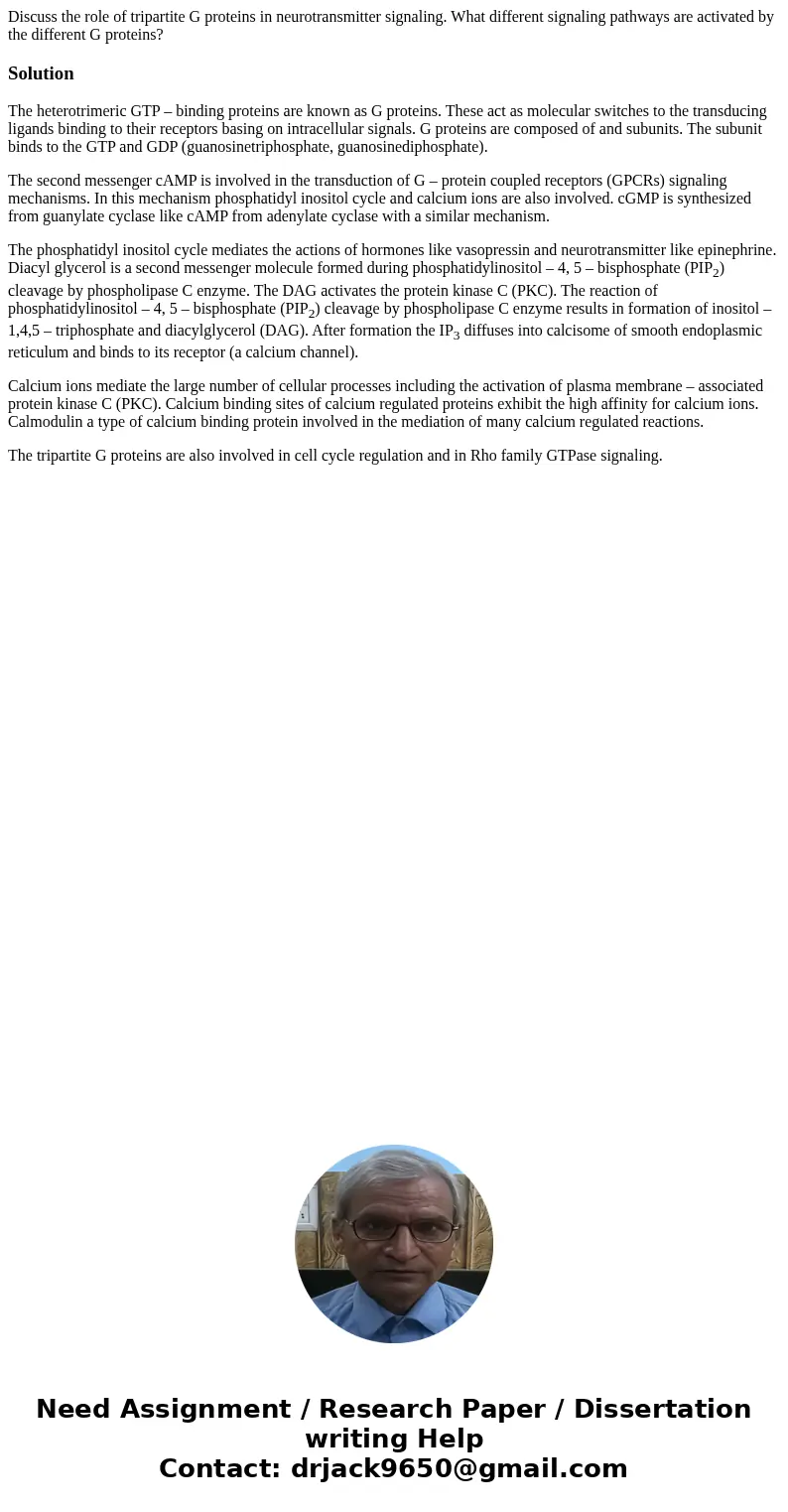Discuss the role of tripartite G proteins in neurotransmitte
Discuss the role of tripartite G proteins in neurotransmitter signaling. What different signaling pathways are activated by the different G proteins?
Solution
The heterotrimeric GTP – binding proteins are known as G proteins. These act as molecular switches to the transducing ligands binding to their receptors basing on intracellular signals. G proteins are composed of and subunits. The subunit binds to the GTP and GDP (guanosinetriphosphate, guanosinediphosphate).
The second messenger cAMP is involved in the transduction of G – protein coupled receptors (GPCRs) signaling mechanisms. In this mechanism phosphatidyl inositol cycle and calcium ions are also involved. cGMP is synthesized from guanylate cyclase like cAMP from adenylate cyclase with a similar mechanism.
The phosphatidyl inositol cycle mediates the actions of hormones like vasopressin and neurotransmitter like epinephrine. Diacyl glycerol is a second messenger molecule formed during phosphatidylinositol – 4, 5 – bisphosphate (PIP2) cleavage by phospholipase C enzyme. The DAG activates the protein kinase C (PKC). The reaction of phosphatidylinositol – 4, 5 – bisphosphate (PIP2) cleavage by phospholipase C enzyme results in formation of inositol – 1,4,5 – triphosphate and diacylglycerol (DAG). After formation the IP3 diffuses into calcisome of smooth endoplasmic reticulum and binds to its receptor (a calcium channel).
Calcium ions mediate the large number of cellular processes including the activation of plasma membrane – associated protein kinase C (PKC). Calcium binding sites of calcium regulated proteins exhibit the high affinity for calcium ions. Calmodulin a type of calcium binding protein involved in the mediation of many calcium regulated reactions.
The tripartite G proteins are also involved in cell cycle regulation and in Rho family GTPase signaling.

 Homework Sourse
Homework Sourse